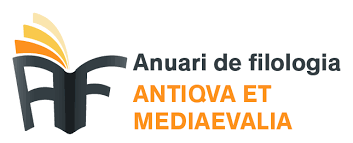E’ lecito ai poeti alterar le favole: The story of Dido according to Giovan Battista Busenello
DOI:
https://doi.org/10.1344/AFAM202121136400Paraules clau:
Dido, òpera, Busenello, Virgilio, CavalliResum
The aim of this paper is to analyze the rewriting of Dido’s myth by Giovan Battista Busenello, the librettist of the first opera named after the queen of Carthage. The imposing regality of Dido and the highly dramatic tension of the Aeneid are absent in Busenello’s libretto. Interestingly, if in the fourth book of the Virgilian poem Dido kills herself with Aeneas’ sword, in the final act of the opera she marries Iarbas, king of Gaetulians. Poignantly, in her only aria Dido sings her rejection of Iarbas’ advances, instead of her death wish or her sorrow for Aeneas’ departure.
The tragic éthos we expect of Dido surfaces in two other characters in the opera, Hecuba and Cassandra, specifically through their laments. The basso lines of their laments call to mind the formal archetype at the heart of the famous Dido’s lament, Dido’s aria in Dido and Eneas, composed by Henry Purcell forty-eight years after the Didone. In that way, Hecuba and Cassandra constitute the actual tragic characters in the Didone, while, conversely, Dido is granted a happy ending, a deviation from the source just as peculiar as its author.
Descàrregues
Publicades
Com citar
Número
Secció
Llicència
L'autor/a que publica en aquesta revista està d'acord amb els termes següents:
a. L'autor/a conserva els drets d’autoria i atorga a la revista el dret de primera publicació de l’obra.
b. Els textos es difondran amb la llicència de Reconeixement de Creative Commons, la qual permet compartir l’obra amb tercers, sempre que en reconeguin l’autoria, la publicació inicial en aquesta revista i les condicions de la llicència.
Taxes d'enviament i publicació: Anuari de Filologia. Antiqua et Mediaevalia no cobra taxes per tramesa de treballs, ni tampoc quotes per la publicació dels seus articles.







